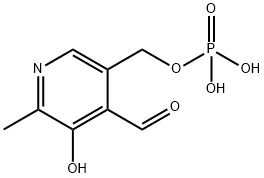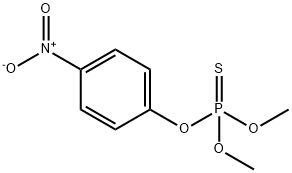PRODUCT Properties
| Melting point: | 140-143 °C |
| Boiling point: | 565.7±60.0 °C(Predicted) |
| Density | 1.638±0.06 g/cm3(Predicted) |
| storage temp. | Inert atmosphere,Store in freezer, under -20°C |
| solubility | DMSO (Slightly, Heated), Methanol (Slightly), Water (Slightly) |
| form | powder |
| pka | 1.56±0.10(Predicted) |
| color | Off-white to yellow |
| Stability: | Hygroscopic |
| InChI | InChI=1S/C8H10NO6P/c1-5-8(11)7(3-10)6(2-9-5)4-15-16(12,13)14/h2-3,11H,4H2,1H3,(H2,12,13,14) |
| InChIKey | NGVDGCNFYWLIFO-UHFFFAOYSA-N |
| SMILES | C1(C)=NC=C(COP(O)(O)=O)C(C=O)=C1O |
| LogP | -1.921 (est) |
| CAS DataBase Reference | 54-47-7(CAS DataBase Reference) |
| EPA Substance Registry System | 4-Pyridinecarboxaldehyde, 3-hydroxy-2-methyl-5-[(phosphonooxy)methyl]- (54-47-7) |
Description and Uses
Pyridoxal phosphate is an organic compound formed by the combination of vitamin B6 and phosphoric acid, including pyridoxal, pyridoxamine, and pyridoxine, which exist in the form of phosphate esters in the body. Among them, pyridoxal phosphate and pyridoxamine phosphate can be converted into each other, and they are all active types. Pyridoxal phosphate is the active form of vitamin B6. Several reactions catalyzed by pyridoxal phosphate are: transamination, α-decarboxylation, β-decarboxylation, β-elimination, γ-elimination, racemization and aldol reaction.
Vitamin (enzyme co-factor).
Safety
| Symbol(GHS) |  GHS07 |
| Signal word | Warning |
| Hazard statements | H315-H319 |
| Precautionary statements | P264-P280-P302+P352-P337+P313-P305+P351+P338-P362+P364-P332+P313 |
| Safety Statements | 22-24/25 |
| WGK Germany | 3 |
| F | 8-10-23 |
| HS Code | 29362500 |



